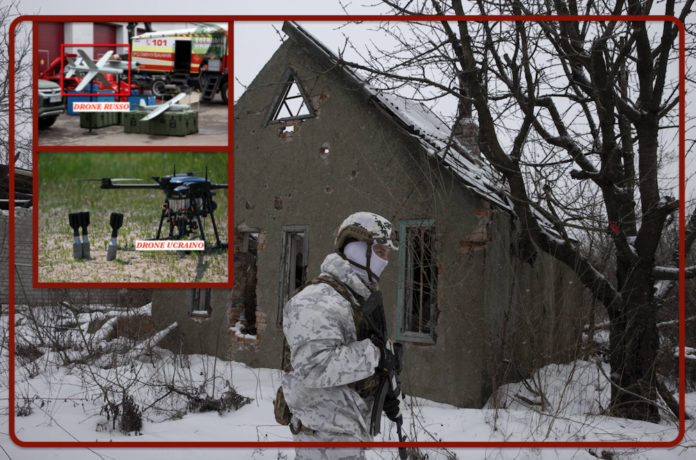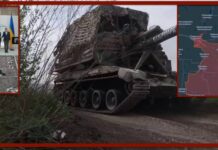
The Ukrainian FPV drone attack situation remains the number one problem on the front for the Russians. On average, every day the Ukrainian Armed Forces in the defense sector of one of the regiments carries out thirty to seventy drone strikes.
Furthermore, since the drone is a high-precision weapon, almost every drone hits a specific target: from trenches to equipment and even individual infantrymen. At the same time, the number of day and night drones has become almost the same.
Night drones equipped with thermal contrast cameras are even more dangerous. During the day for the military there might be the advantage of camouflage: nets, cloaks, trees, etc., but at night a person’s heat signature is clearly visible under any net or tree. Therefore, delivering ammunition, food and carrying out rotations became an extremely difficult task. Standard electronic warfare systems lose their effectiveness very quickly because the Ukrainians, ensuring that their drones are not blocked, promptly change their control frequencies.
In general, in the field of UAVs, the Armed Forces of Ukraine are organizationally ahead of the Russians by the Russians’ own admission, at least by one step, having moved from the creation of separate units (companies and detachments) of UAV operators to a new structure flexible of “directions”, uniting operators and manufacturers in specific directions, which allows them to make changes very quickly, both in the design of drones and in their hardware, that is, in changing frequencies.
The Ukrainian working algorithm according to the social sphere is as follows: “Companies and detachments order drones in batches (up to 1000 pieces) from manufacturers “tied” to a specific direction. At the same time, the order immediately specifies the parameters taking into account the current Russian electronic warfare, which allows every three to four weeks to introduce into battle a new batch of drones that can no longer be suppressed by existing electronic warfare equipment” . And apparently this method works.
“Moreover,” we read in the information flow of the social sphere, “on different sections of the front (directions) may differ significantly. And Russian electronic warfare that works on one front may not work at all on another front. Such a flexible and network-centric system of “directions” is obviously much more effective than the system currently being built in the Russian military-industrial complex, which relies on large drone manufacturers, for whom a quick response to changes in the situation at the front and working with small batches of drones or electronic warfare systems for specific areas of the front is simply unprofitable, and any modification requires a whole bureaucratic approval system and, accordingly, a waste of time.”
The Russians, according to military analysts of the social sphere, on the one hand need to build the centrality of the network in the military structure of UAVs – to create a whole production line on the profile of UAVs and electronic warfare, and, on the other hand, a rigorous standardization to avoid negative consequences: suppression of Russian communications and loss of control during the electronic warfare operation deployed by Moscow.
Graziella Giangiulio















